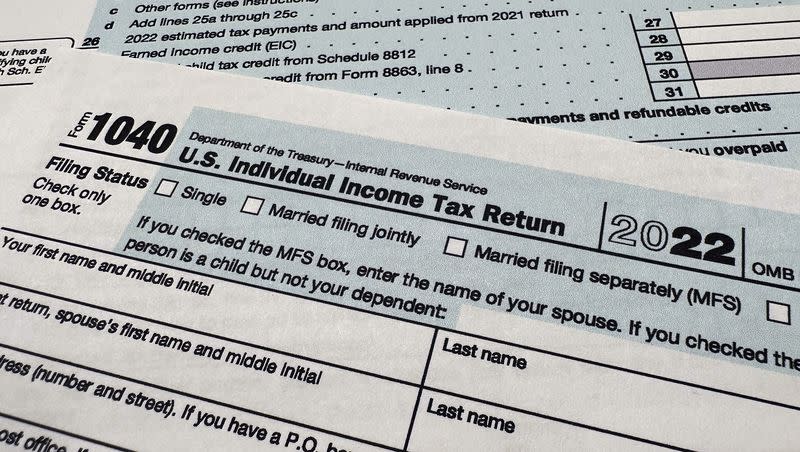Opinion: When will the IRS fill in our tax returns for us?

If you lived in Estonia, your income tax forms would be sent to you each year with everything already filled in — income tax there is a flat rate, the same for everyone, making it easy. The workinestonia.com website boasts it can take as little as three minutes for an average Estonian to file online.
By contrast, in the United States the average person takes about 13 hours to prepare income tax returns by mid-April each year. The Congressional Research Service says people who pay someone to do this, and the IRS says about 53% of us do so, have to shell out an average of $240 apiece. That varies widely depending on how much someone owns, has invested or qualifies for one of countless credits or deductions.
The U.S. tax code contains about 10,000 sections, according to eFile.com. This figure is in hot dispute, although politifact.com studied the matter and concluded no one is really sure of its actual length.
Which is the same answer you get if you want to know the vastness of outer space.
It’s also going to be close to the answer to how many politicians I’ve heard, in my 40 years in this business, say we need to find a way to fit our tax returns on a postcard. They never specify how big that postcard would be.
Related
As I wrote a few months ago, no one would ever deliberately design such a system from scratch.
Well, never fear, folks. The IRS is hard at work at, perhaps eventually, bringing us a pre-filled basic tax return.
The misnamed Inflation Reduction Act (remember that?) requires the IRS to set up software that would allow people to file returns directly, online, without having to use third-party tax preparation software. A pilot program is expected to be in place by 2024.
A lot of people think this is the first step toward offering pre-filled tax forms, Estonian style, to the American people. A working paper by a number of academic researchers indicates that 1040 forms for as many as 42% to 48% of Americans “could be accurately pre-populated using only current-year information returns and the prior-year return.”
The Congressional Research Service says the IRS could make this happen in one of two ways. The first is to try to withhold from paychecks the exact amount people will owe the federal government. The other method would require the IRS to use third-party information, from a bank and employer, to fill in the blanks, which a taxpayer could then check for accuracy.
If only it were so easy.
Related
Ryan Ellis, an IRS enrolled agent who heads the Center for a Free Economy, wrote an op-ed for The Hill explaining why he thinks this won’t work. It turns out the IRS already pre-fills tax forms for thousands of taxpayers who fail to turn in returns each year, using a little-known program called “Substitute for Return.”
Ellis and a fellow tax expert conducted a double-blind study using hypothetical returns for “representative” taxpayers. One of them prepared returns using the IRS program. The other did it with commercial tax preparation software that examined eligible deductions and credits. He found substantial differences.
For example, a single mother of two young children with $24,000 in annual income was liable for $1,198 in taxes using the IRS program, but received a $7,731 refund using the commercial software.
Ellis wrote that “the IRS does not have and can never gain access to the very consequential details of our lives, including who lives in our households or the allowable expenses we incur as property and business owners.”
He said more than 70 million tax-paying households claim deductions and/or credits.
The problem, he said, is the tax code is too complicated.
That ought to be obvious. It’s also the conclusion of the nonprofit Tax Foundation, a Washington-based research group that concludes the code is too complicated even for a free direct-filing software program.
Last month, the Tax Foundation studied what would happen if the U.S. adopted a system similar to Estonia’s. Among other things, it could boost our economic output by 2.5%, increase wages by 1.4% and add 1.3 million full-time jobs. Also, it would begin to reduce the nation’s debt burden.
It would, in other words, remove a lot of heavy bureaucratic nonsense.
But in a nation where a lot of that nonsense is protected by powerful lobbies, and where tax preparation has become a huge industry, I wouldn’t bet my next refund on it happening.

